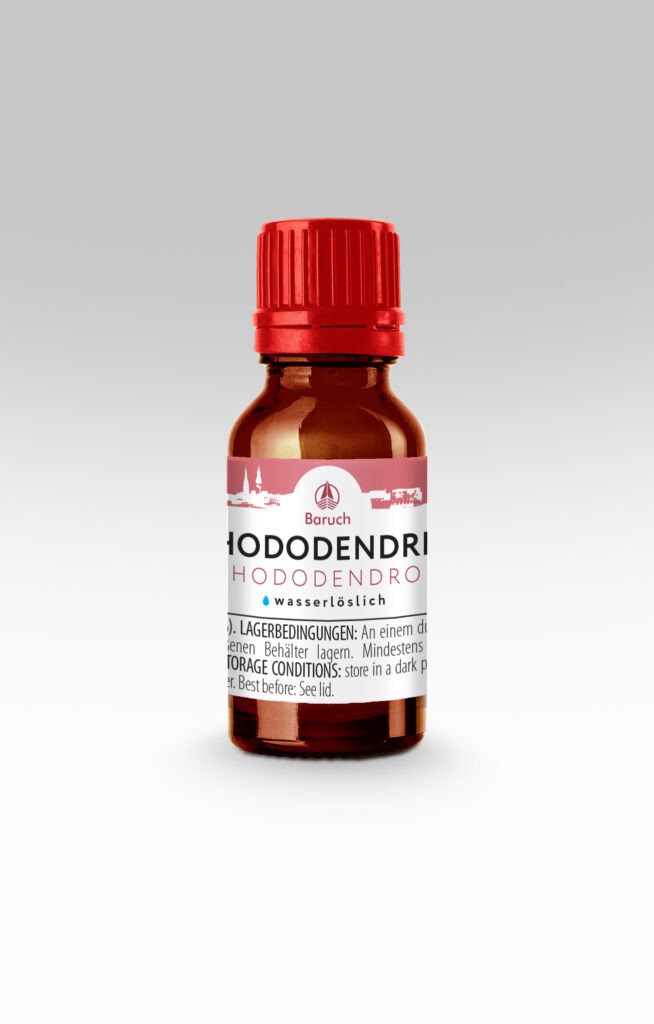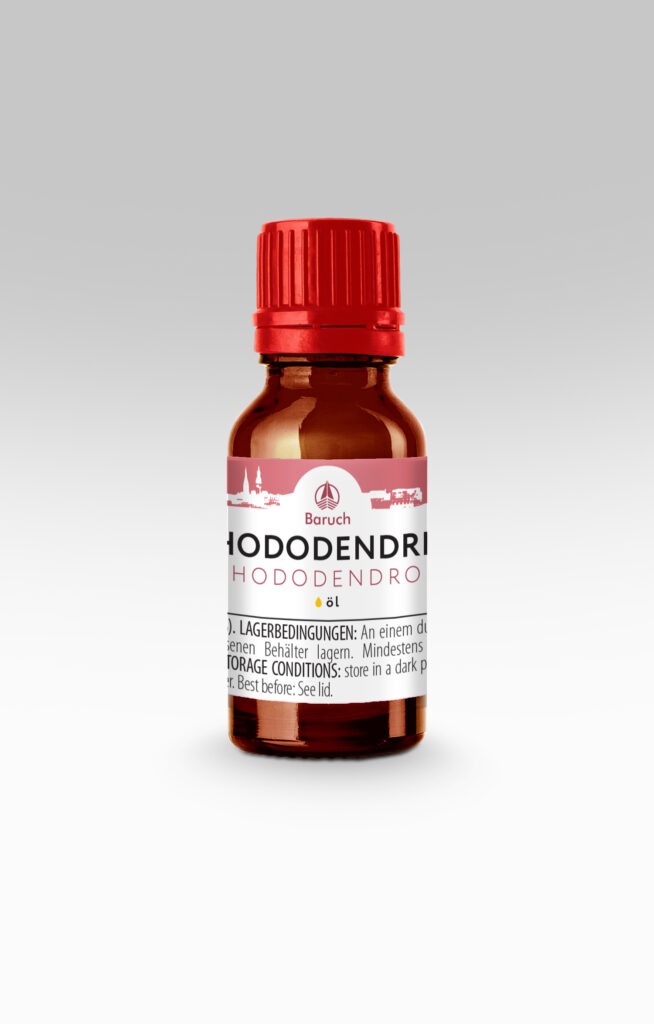Rhododendron has always been considered a very powerful medicinal plant that also has a slight tonic effect.
Currently, medical research has proven that rhododendrons leaves reduce blood pressure, relieve fatigue, eliminate tissue swelling, normalize the work of internal organs, cure chronic pathologies, promote the body’s accelerated release of toxins, strengthen the walls of blood vessels, stimulate cognitive abilities, heal wounds, normalize the heart rate, increase sexual desire, prevent the development of strokes, improve the quality of sleep and strengthen the body’s defenses.
In addition, all these properties are fully confirmed by the results of the detailed chemical composition of the CO2 extract from rhododendron leaves and the evaluation of the biological activity of the main compounds isolated from the extract. Of course, it is not possible to evaluate and describe all identified compounds in detail, so only those compounds were evaluated that are present in the highest concentrations in the extract.


Chart 1. Evaluation of the biological activity of the main compounds of the CO2 extract of rhododendron
| NAME | CONTENT IN% OF THE AMOUNT OF VOLATILE COMPONENTS | EFFECT |
|---|---|---|
| Nerolidol | 11,75 | Has calming, anti-cancer, antifungal, antimicrobial, anti-inflammatory and antioxidant properties. Fights ulcers. Perfume ingredient |
| Beta-Farnesene | 9,10 | Has anti-inflammatory, soothing, antispasmodic, antibacterial, antifungal and soothing properties |
| Farnesol | 5,04 | Shows antibacterial properties. Suppresses the development of tumors, kills cancer cells |
| Germakren | 4,74 | Choleretic, anti-stress, healing, normalizes blood pressure, anti-allergic |
| Pinene alpha and beta | 4,51 | Improves memory, antibacterial, improves bronchial function, anti-inflammatory |
| 4-phenyl-2-butanol | 2,81 | Has analgesic properties. Used in perfumery |
| Nanokosan | 2,02 | Wound healing, anti-inflammatory |
| Senunone | 1,69 | No information on biological activity |
| Myristicin | 1,57 | Tonifies, increases brain activity |
| Quercetin | 1,12 | Has an analgesic effect, strengthens the vascular walls, has an antiviral effect, activates tissue regeneration and healing. Anti-inflammatory, diuretic, antiallergenic. Increases resistance to stressful situations, calms the nervous system |
In terms of the combination of useful properties, rhododendrons can be attributed to the plant adaptogens (these are the names of plants that activate the body’s defenses and increase their non-specific resistance to a variety of harmful effects).
The main characteristic of the Rhododendron CO2 extract, however, is perhaps its wonderful taste and a very pleasant smell, in which raspberry and strawberry notes can be clearly distinguished. Among the adaptogenic plants, this is probably the only one that tastes that good – all the others are flavored at best and sometimes turn out to be completely tasteless.
It is this unique circumstance that opens up very broad prospects for the popularization of this plant and the commercialization of products based on rhododendron extract. Best of all, rhododendron CO2 extract manifests itself as an additive to beverages – tea, fruit drinks, sodas, and many others, including functional beverages. It can also be used as an additive to confectionery and fillings.
Drinks based on rhododendron CO2 extract can be made both in finished bottle form and in the form of teas with the extract applied to them, which when brewed have the taste of this plant. The most promising form of marketing, however, are various types of instant concentrates that users can add to beverages of their own choosing – recipes for such products are available, please contact us for details.
Chart 2. Application rates, recommendations for the use and storage of CO2 extract rhododendron
| Food usage rates | Item А100: 0.002% (20g per ton) Water-soluble microemulsions EMA1: 0.2% (2l per 1000l or 2ml per liter) |
| Application rates in cosmetics | Item А10: 1-3% Item А100: 0.1-0.3% |
| Recommendations for use | It is recommended to add CO2 extracts in the final stages of preparation, in the cooling phase of the end product. |
| Storage Instructions | Storage advice |
